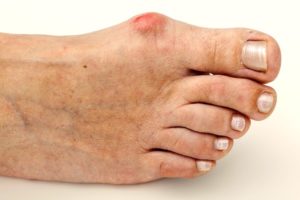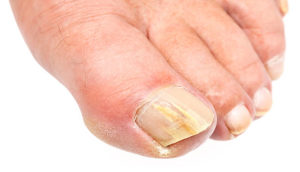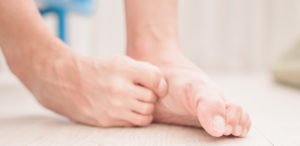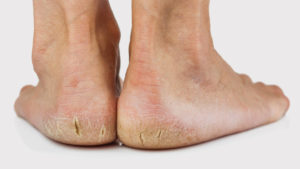
As women, we expect great things from our feet. They need to fit into tight shoes, keep us comfortable in heels, take us from work to the gym to the park with the kids – all while looking good, feeling great and staying healthy. With any expectations, come the fears of what may go wrong with our feet.
As podiatrists, we regularly discuss these otherwise unspoken foot fears with women looking for solutions and prevention strategies. Today, we thought we’d share the top four fears we hear, as well as share the advice we give to help prevent these fears from coming to life.
Fear One: Bunions

The seed for this fear is usually planted very early on in childhood, when we see our mothers or grandmothers bunions and start to wonder if our feet will turn out the same way. Bunions describe the bony bumps on the inside of the feet, by the big toes. While bunions do tend to ‘run in families’ due to similarities in the biomechanics of the feet, there’s another cause of bunions that can affect anyone – tight, ill-fitting footwear.
Wearing shoes that squeeze our feet, rub against our bones, or that put heavy loads through our feet can contribute to the development of bunions. High heels and pointed shoes are perfect examples. This makes our advice straightforward – avoid wearing these shoes for a prolonged time. A couple of hours out for dinner is manageable, but find a more comfortable and supportive option for throughout the day. You can find professional, stylish and comfortable women’s shoes from brands like Ziera, Naot, Vionic and Merrel. Making this switch may help prevent a bunion or slow down its progression over time.
To learn more about bunions, click here.
Fear Two: Fungal Nail Infection

Most of us will know at least one person who ‘picked up’ a fungal nail infection from a nail salon and watched their toenail become discoloured or flaky. The truth is that fungal nail infections can be picked up from any surface containing fungal spores. This includes public changing rooms, gyms, showers, nail tools – and even our homes if anyone living in the household has the infection.
Prevention here is centred around taking steps to minimise your risk of infections. This includes:
- Wearing slip-ons in public showers, pool areas and changing rooms
- Avoiding sharing nail polishes that have fungal microspores inside the bottle
- Avoiding sharing shoes and socks with anyone in your household with the infection
- Avoiding nail salons where the tools are not sterilised and the surfaces are not disinfected between customers
If a fungal nail infection does take hold, we recommend treating it as early as possible, before it affects the entire nail. Treatments like laser therapy are safe, pain-free and have shown exceptional results in clinical studies for successful clearance rates.
To learn more about fungal nail infections, click here.
Fear Three: Sweaty, Smelly Feet

We’ve all experienced sitting next to someone who removes their shoes and leaves a lingering, unpleasant odour. Our feet have around 250,000 sweat glands. When combined with closed-in shoes, socks and Australia’s humidity, it’s not surprising that our feet become sweaty. When the sweat isn’t effectively absorbed, bacteria can grow and create a bad odour.
Keeping our feet as dry and ventilated as possible is key. This can include:
- Changing socks regularly and wearing cotton or breathable socks that draw moisture away from the feet
- Airing your feet when possible
- Using powders or other agents to help keep your feet dry
- Changing between shoes daily so they can dry
To learn more about why smelly feet develop, click here.
Fear Four: Rough, Painful Cracked Heels

When we notice harder patches of calloused skin on our feet, our minds may jump to wondering whether we’re headed towards developing painful cracks, too. For cracked heels to develop, our heels must first develop a thick, dry layer of callus. Callus is caused by increased pressure or friction to an area of the foot. As more force, often from weight-bearing, is applied to the callus, it may ‘crack’. While some cracks can be unnoticeable, others may be painful and even bleed if they break the healthy skin beneath the callus.
The key to preventing cracked heels is to manage any callus on the heels before it becomes a problem. This can be done by:
- Reducing excess force through the heels, e.g. wearing cushioned, supportive footwear
- Moisturising the heels daily to help prevent dryness
- Having the callus removed professionally by your My FootDr podiatrist
To learn more about cracked heels, click here.
If you have any other concerns with your feet or legs that you’d like professional advice or care for, get help from your local My FootDr podiatry team. Your podiatrist will work with you to help relieve any current pains or problems, and help with prevention strategies for any concerns you have.
To make an appointment, you can book online here or call 1800 FOOTDR today.

